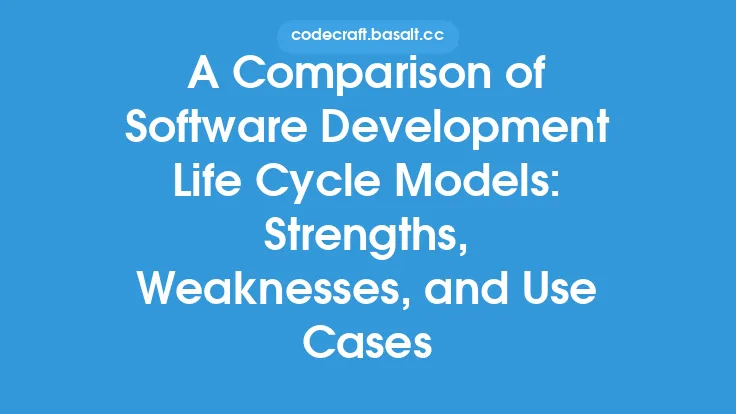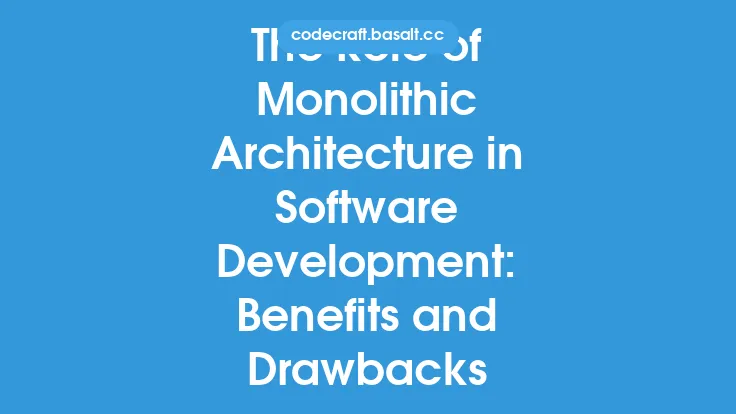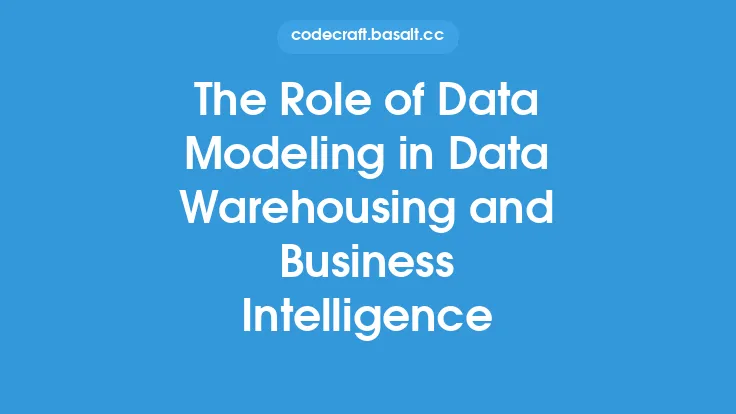Software development life cycles are crucial in determining the success of a project. Among the various models used in software engineering, iterative and incremental development methodologies have gained significant attention due to their flexibility and adaptability. In this article, we will delve into the basics of spiral and incremental models, exploring their principles, advantages, and applications.
Introduction to Iterative and Incremental Development
Iterative and incremental development is an approach to software development that emphasizes the delivery of small, incremental pieces of software, with each iteration building upon the previous one. This approach allows for flexibility, adaptability, and continuous improvement throughout the development process. The spiral and incremental models are two popular iterative and incremental development methodologies used in software engineering.
The Spiral Model
The spiral model, also known as the spiral development model, is a risk-driven approach to software development. It was first introduced by Barry Boehm in 1988 and is based on the idea of iterating through a spiral of phases, with each phase consisting of planning, risk analysis, engineering, and evaluation. The spiral model is divided into four quadrants: planning, risk analysis, engineering, and evaluation. The model starts with a small initial spiral and gradually expands to accommodate more features and functionality.
The spiral model is particularly useful for large, complex projects with high levels of uncertainty and risk. It allows for continuous evaluation and refinement of the software, reducing the risk of project failure. The spiral model is also suitable for projects that require frequent changes and updates, as it enables developers to adapt quickly to changing requirements.
The Incremental Model
The incremental model is another popular iterative and incremental development methodology. It involves delivering software in small increments, with each increment building upon the previous one. The incremental model is based on the idea of breaking down the software development process into smaller, manageable chunks, with each chunk representing a specific feature or functionality.
The incremental model is divided into several phases, including requirements gathering, design, implementation, testing, and deployment. Each phase is repeated for each increment, with the output of each phase serving as the input for the next phase. The incremental model is particularly useful for projects with well-defined requirements and a clear understanding of the software's functionality.
Key Principles of Iterative and Incremental Development
Iterative and incremental development methodologies are based on several key principles, including:
- Flexibility: Iterative and incremental development allows for flexibility and adaptability throughout the development process.
- Continuous improvement: The iterative and incremental approach enables continuous evaluation and refinement of the software, reducing the risk of project failure.
- Risk management: The spiral model, in particular, is designed to manage risk and uncertainty throughout the development process.
- Customer involvement: Iterative and incremental development encourages customer involvement and feedback throughout the development process.
- Deliverable-based: The incremental model, in particular, is focused on delivering small, incremental pieces of software, with each increment representing a specific feature or functionality.
Advantages of Iterative and Incremental Development
Iterative and incremental development methodologies offer several advantages, including:
- Improved flexibility: Iterative and incremental development allows for flexibility and adaptability throughout the development process.
- Reduced risk: The spiral model, in particular, is designed to manage risk and uncertainty throughout the development process.
- Increased customer satisfaction: Iterative and incremental development encourages customer involvement and feedback throughout the development process, leading to increased customer satisfaction.
- Faster time-to-market: The incremental model, in particular, enables faster time-to-market, as software is delivered in small increments.
- Improved quality: The iterative and incremental approach enables continuous evaluation and refinement of the software, reducing the risk of project failure and improving overall quality.
Applications of Iterative and Incremental Development
Iterative and incremental development methodologies are widely used in various industries, including:
- Software development: Iterative and incremental development is commonly used in software development, particularly for large, complex projects.
- System development: The spiral model, in particular, is used in system development, where risk and uncertainty are high.
- Product development: The incremental model, in particular, is used in product development, where speed and agility are crucial.
- Research and development: Iterative and incremental development is also used in research and development, where flexibility and adaptability are essential.
Challenges and Limitations of Iterative and Incremental Development
While iterative and incremental development methodologies offer several advantages, they also present several challenges and limitations, including:
- Higher upfront costs: The spiral model, in particular, requires significant upfront investment in planning and risk analysis.
- Increased complexity: Iterative and incremental development can lead to increased complexity, particularly if not managed properly.
- Difficulty in predicting outcomes: The iterative and incremental approach can make it difficult to predict outcomes, particularly if requirements are not well-defined.
- Need for skilled resources: Iterative and incremental development requires skilled resources, particularly in areas such as risk management and continuous integration.
Conclusion
Iterative and incremental development methodologies, including the spiral and incremental models, offer a flexible and adaptable approach to software development. By emphasizing continuous evaluation and refinement, these methodologies reduce the risk of project failure and improve overall quality. While they present several challenges and limitations, the advantages of iterative and incremental development make them a popular choice for software development projects. As the software development landscape continues to evolve, the importance of iterative and incremental development will only continue to grow, enabling developers to deliver high-quality software quickly and efficiently.





